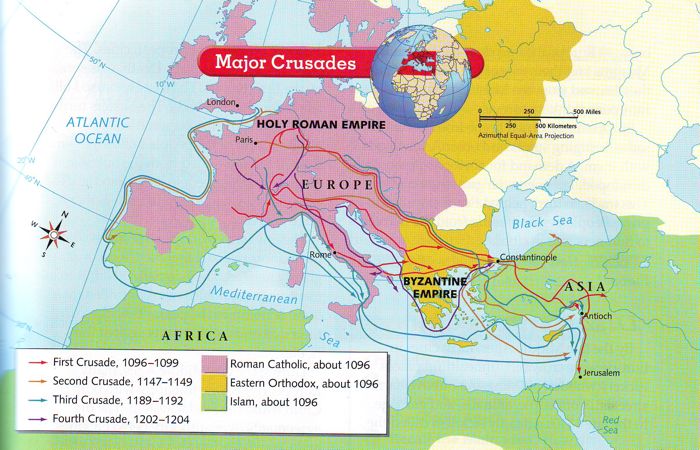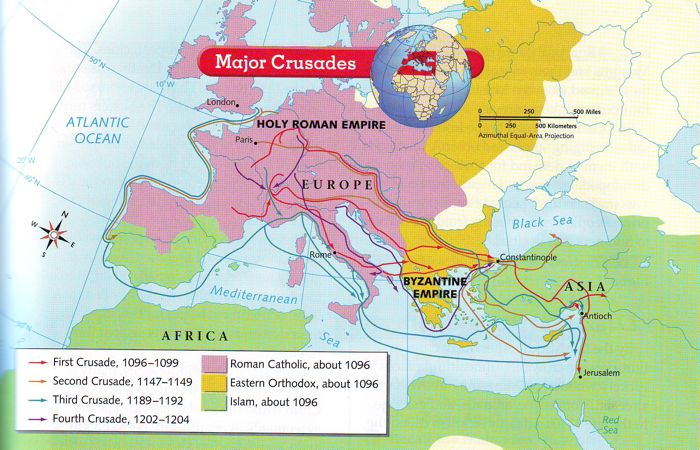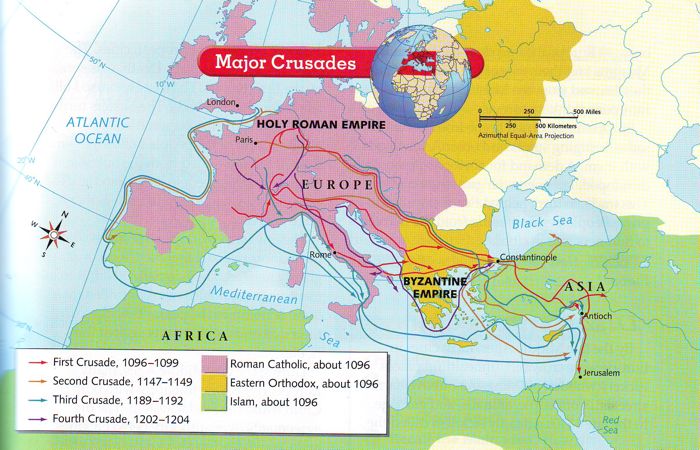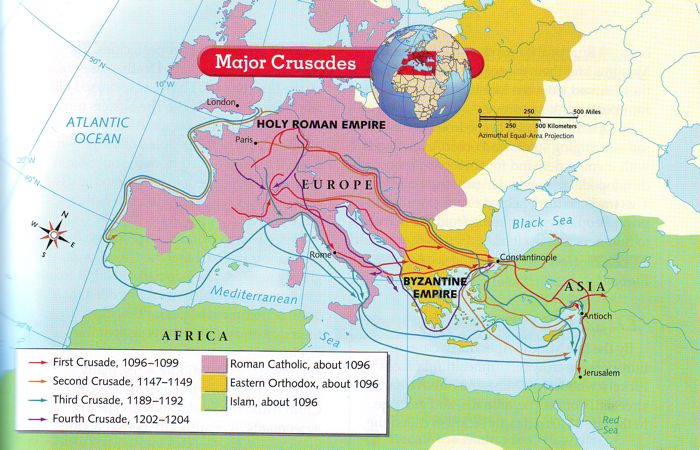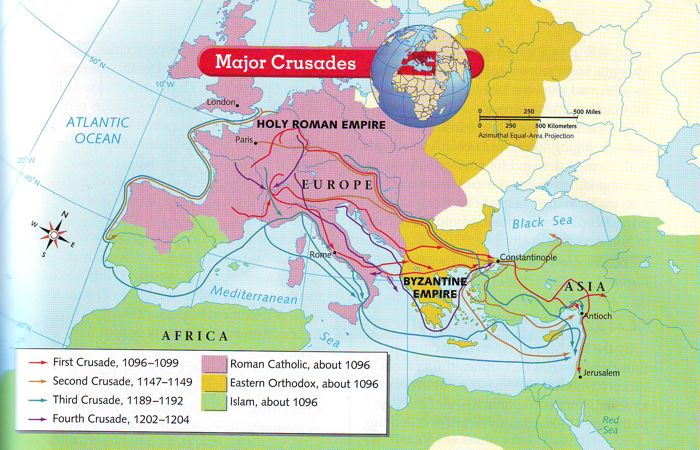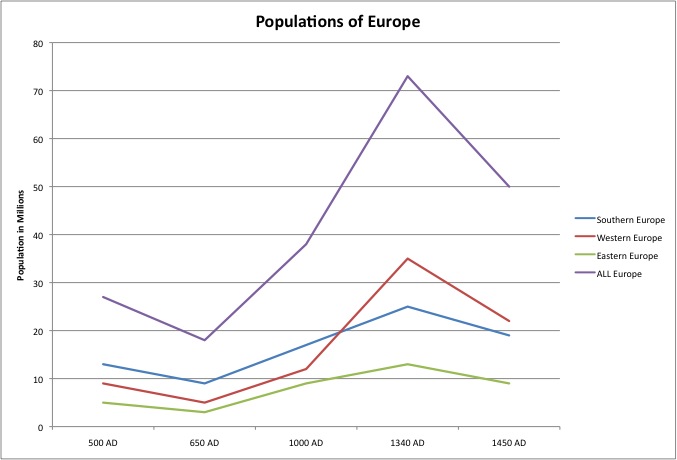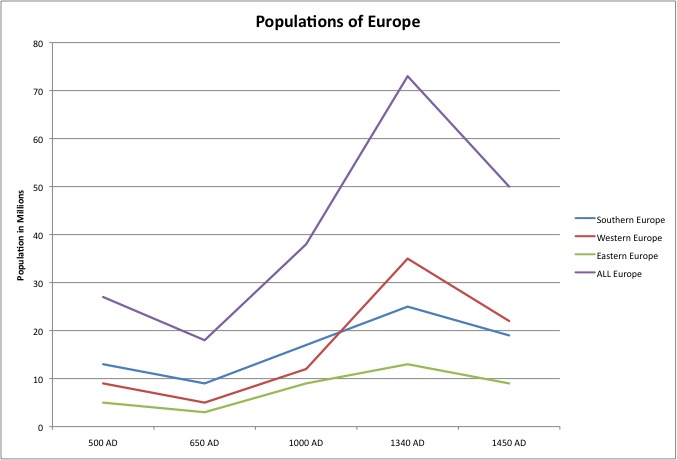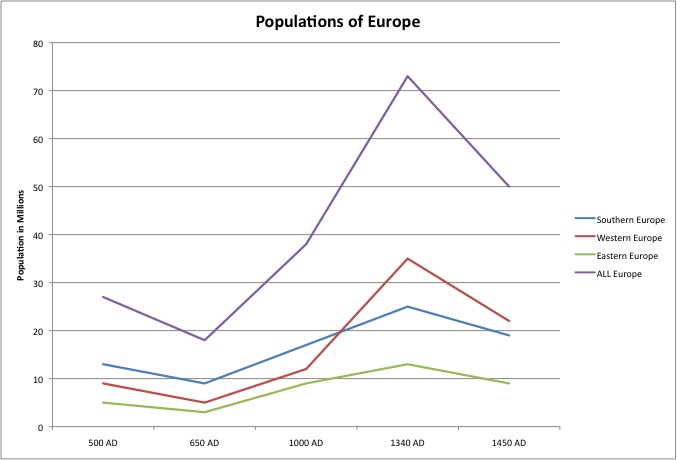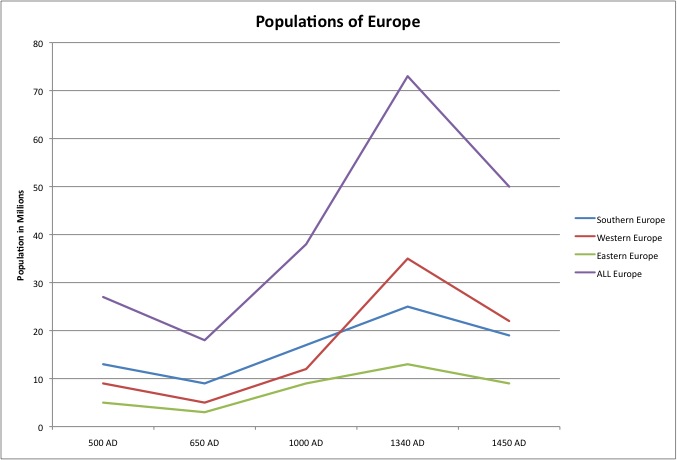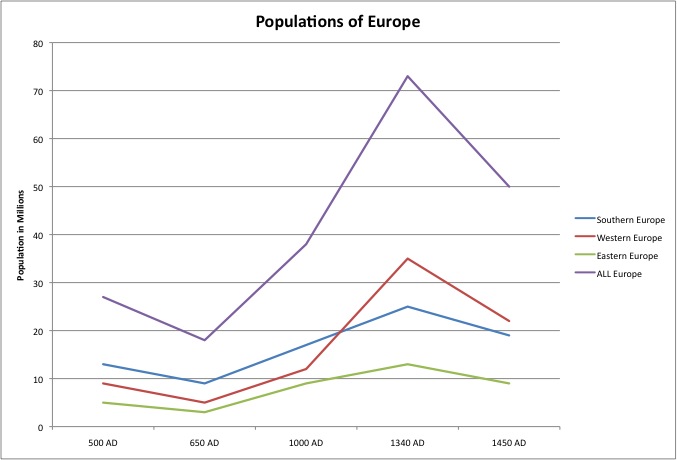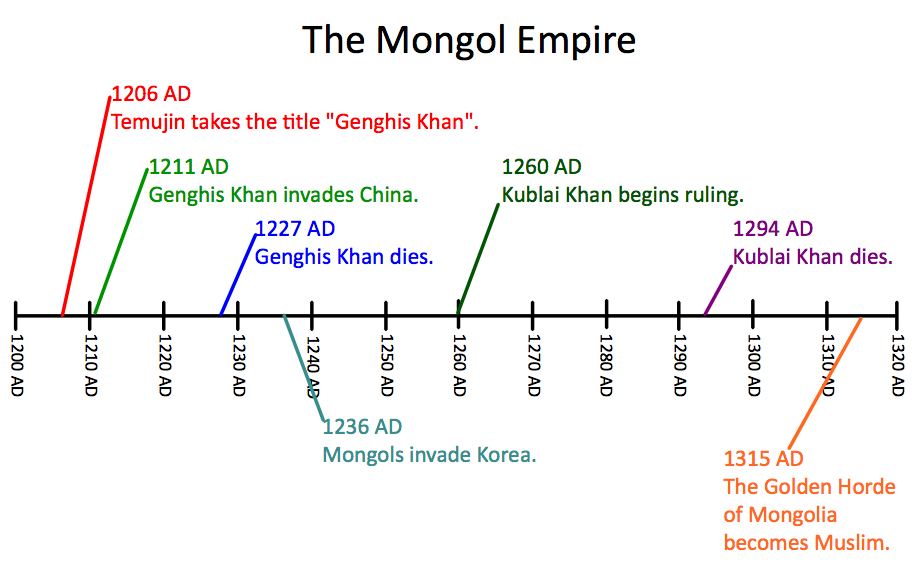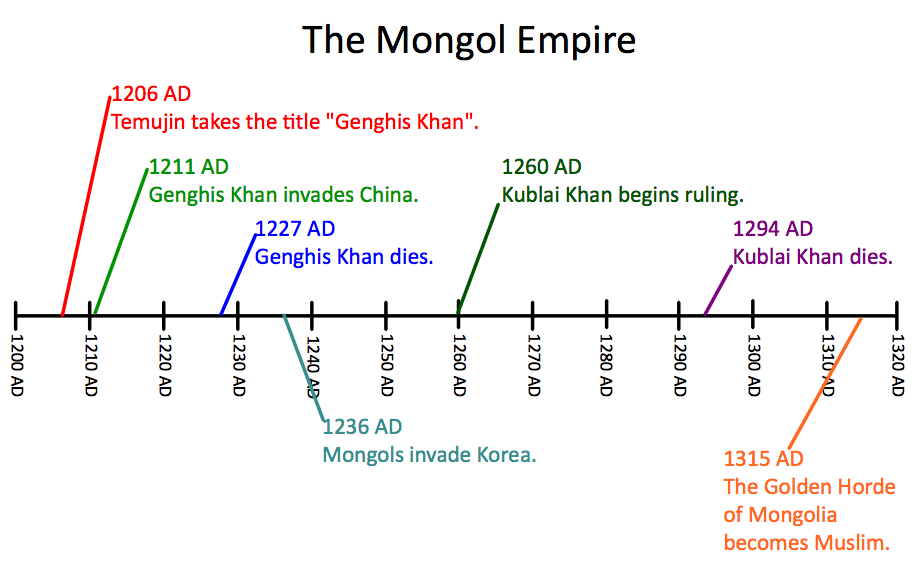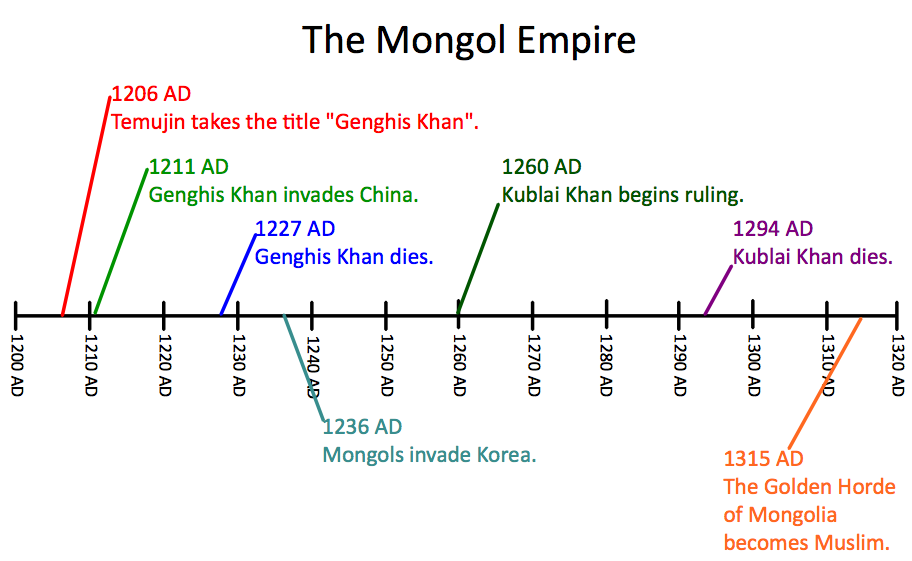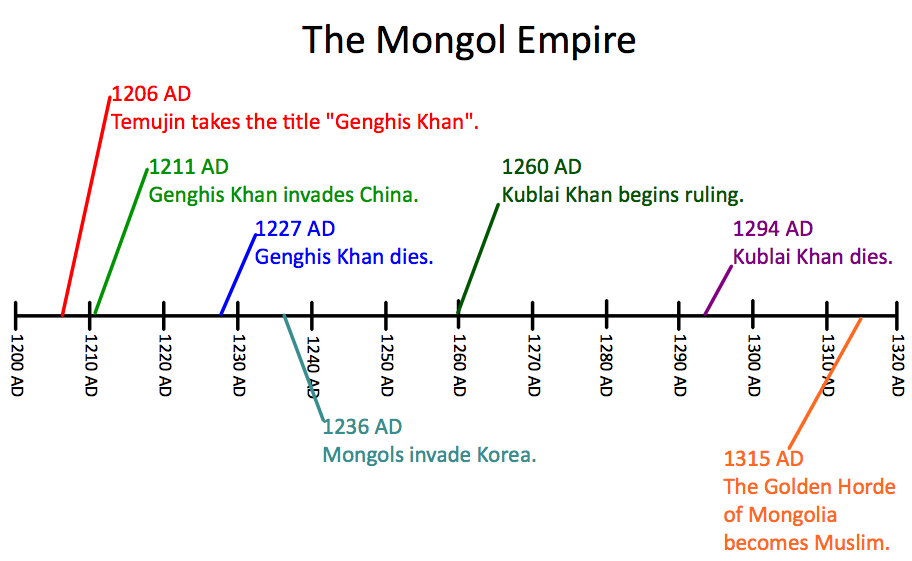Middle Ages Test (Hours 1-3)

Middle ages test for hours 1-3
- 1.
Fredrick lives on land owned by Duke Eddington. The Duke is in turn only using land given to him by the king. Which term(s) best describes Fredrick?
- A.
Lord
- B.
Vassal
- C.
Royalty
- D.
Noble
- E.
Commoner
Correct Answer(s)
B. Vassal
E. CommonerExplanation
Fredrick is best described as a vassal because he lives on land owned by Duke Eddington, who is using land given to him by the king. As a vassal, Fredrick is a subordinate who holds land in exchange for providing military service or other obligations to the Duke. However, Fredrick can also be considered a commoner since he does not belong to the royalty or noble class.Rate this question:
-
- 2.
Fredrick lives on land owned by Duke Eddington. The Duke is in turn only using land given to him by the king. Which term(s) best describes Duke Eddington?
- A.
Lord
- B.
Vassal
- C.
Royalty
- D.
Noble
- E.
Commoner
Correct Answer(s)
A. Lord
B. Vassal
D. NobleExplanation
Duke Eddington can be described as a lord because he owns land and has authority over it. He can also be described as a vassal because he receives land from the king and owes him loyalty and service in return. Additionally, he can be described as noble because he holds a high rank in society due to his ownership of land and his relationship with the king.Rate this question:
-
- 3.
Fredrick lives on land owned by Duke Eddington. The Duke is in turn only using land given to him by the king. Which term(s) best describes the king?
- A.
Lord
- B.
Vassal
- C.
Royalty
- D.
Noble
- E.
Commoner
Correct Answer(s)
A. Lord
C. RoyaltyExplanation
The term "lord" best describes the king because he is the ruler or sovereign of the land and has authority over the Duke and Fredrick. The term "royalty" also applies to the king because he is a member of the royal family and holds a high-ranking position.Rate this question:
-
- 4.
What term was used to describe the land that one person loaned another?
- A.
Lord
- B.
Vassal
- C.
Fief
- D.
Feudalism
Correct Answer
C. FiefExplanation
A fief was a term used to describe the land that one person loaned or granted to another. In the feudal system, a lord would grant a fief to a vassal in exchange for their loyalty and military service. The vassal would then become the holder of the fief and have the right to use and profit from the land, while still owing certain obligations to the lord. This system was a key aspect of feudalism, where land ownership and loyalty were interconnected.Rate this question:
-
- 5.
A student was asked by his teacher to list the things a lord would expect from his vassal. The student wrote: "A lord would want service and loyalty from his vassal."How would you grade his answer?
- A.
Excellent - listed everything that should be there
- B.
Good - listed most things but missing one
- C.
Okay - got at least one thing right
- D.
Poor - the answer is completely wrong
Correct Answer
B. Good - listed most things but missing oneExplanation
The student's answer is graded as "Good" because they listed two important things that a lord would expect from his vassal, which are service and loyalty. However, they are missing one additional thing that a lord would expect, so their answer is not considered "Excellent." The answer is not completely wrong, so it is not graded as "Poor."Rate this question:
-
- 6.
Another student was asked by her teacher to list the things a vassal would get from his lord. The student wrote: "A vassal would get protection and land from his lord."How would you grade his answer?
- A.
Excellent - listed everything that should be there
- B.
Good - listed most things but missing one
- C.
Okay - got at least one thing right
- D.
Poor - the answer is completely wrong
Correct Answer
A. Excellent - listed everything that should be thereExplanation
The answer can be graded as "Excellent" because the student correctly identified two important things that a vassal would receive from his lord: protection and land. These are key elements of the feudal system, where vassals would pledge their loyalty and service to their lords in exchange for these benefits. The student accurately captured the essential aspects of the relationship between a vassal and his lord.Rate this question:
-
- 7.
Which term is the name of the religion which worships Allah and translates "surrender to God"?
- A.
Christianity
- B.
Judaism
- C.
Islam
- D.
Buddhism
- E.
Hinduism
Correct Answer
C. IslamExplanation
Islam is the correct answer because it is the religion that worships Allah and translates to "surrender to God." Islam is a monotheistic religion founded in the 7th century by Prophet Muhammad. Its followers, known as Muslims, believe in the teachings of the Quran and strive to submit themselves to the will of Allah. The word "Islam" itself means submission or surrender, emphasizing the central principle of the religion.Rate this question:
-
- 8.
Which person is considered the prophet of Islam who first began teaching its message?
- A.
Gabriel
- B.
Mohammad
- C.
Jesus
- D.
Allah
Correct Answer
B. MohammadExplanation
Mohammad is considered the prophet of Islam who first began teaching its message. He received revelations from Allah through the angel Gabriel and spread the teachings of Islam to his followers. Mohammad is highly revered in Islam as the final prophet and the messenger of Allah. He played a crucial role in establishing and spreading the religion of Islam, making him the correct answer to this question.Rate this question:
-
- 9.
Which term is the holy book of scriptures of Islam?
- A.
Koran
- B.
Ka'bah
- C.
Mecca
- D.
Medina
Correct Answer
A. KoranExplanation
The correct answer is "Koran." The Koran, also known as the Quran, is the holy book of scriptures in Islam. It is considered the word of God as revealed to the Prophet Muhammad by the angel Gabriel. The Koran is written in Arabic and is considered the ultimate authority in Islamic teachings and practices. It covers various aspects of life, including religious rituals, moral guidance, social issues, and legal matters. Muslims believe that the Koran is a guide for living a righteous life and achieving salvation.Rate this question:
-
- 10.
Which term is the holy city of Islam?
- A.
Koran
- B.
Ka'bah
- C.
Mecca
- D.
Medina
Correct Answer
C. MeccaExplanation
Mecca is considered the holy city of Islam because it is the birthplace of the Prophet Muhammad and the site of the Ka'bah, which is the holiest shrine in Islam. Muslims around the world face towards the Ka'bah during their daily prayers. Mecca is also the destination of the annual pilgrimage, known as Hajj, which is one of the Five Pillars of Islam. The city holds immense religious significance for Muslims and is considered the spiritual center of the Islamic faith.Rate this question:
-
- 11.
Which set of guidelines make up the core beliefs of Islam that all Muslims are expected to follow?
- A.
Ten Commandments
- B.
Noble 8 Fold Path
- C.
Five Pillars
- D.
Two Commandments
Correct Answer
C. Five PillarsExplanation
The correct answer is Five Pillars. The Five Pillars of Islam are the core beliefs and practices that all Muslims are expected to follow. These pillars include the declaration of faith (Shahada), prayer (Salat), giving to charity (Zakat), fasting during Ramadan (Sawm), and pilgrimage to Mecca (Hajj). These pillars form the foundation of Islamic faith and serve as a guide for Muslims in their daily lives, shaping their beliefs, actions, and interactions with others.Rate this question:
-
- 12.
Which term best completes this statement?All Muslims believe that ______ is the one true God.
- A.
Allah
- B.
Mohammad
- C.
Yahweh
- D.
God
Correct Answer
A. AllahExplanation
The term "Allah" best completes the statement because "Allah" is the Arabic word for God and is used by Muslims to refer to the one true God in Islam. The statement is specifically asking for the term that all Muslims believe in as the one true God, and "Allah" is the correct answer as it is the central concept in Islamic theology. Mohammad is the prophet of Islam, Yahweh is the Hebrew term for God, and "God" is a more general term that can be used by people of different faiths.Rate this question:
-
- 13.
Which term best completes this statement?Muslims are expected to pray ___ times a day.
- A.
3
- B.
4
- C.
5
- D.
6
Correct Answer
C. 5Explanation
Muslims are expected to pray five times a day. This is a fundamental pillar of Islam known as Salah or Salat. The five daily prayers are Fajr (before dawn), Dhuhr (midday), Asr (afternoon), Maghrib (after sunset), and Isha (nighttime). These prayers are considered essential and obligatory for Muslims as a means of worship, spiritual connection, and seeking guidance from Allah. Praying five times a day is a significant aspect of a Muslim's daily routine and demonstrates their commitment to their faith.Rate this question:
-
- 14.
Which term best completes this statement?Muslims must give money to ______.
- A.
Church
- B.
Mosque
- C.
Poor
- D.
Christians
Correct Answer
C. PoorExplanation
Muslims are required to give money to the poor as a form of charity and to fulfill their religious duty. This act of giving, known as Zakat, is one of the Five Pillars of Islam and is considered a way to purify one's wealth and help those in need. Giving to the poor is emphasized in Islamic teachings and is seen as a means of achieving social justice and equality. Therefore, the term "poor" best completes the statement as it aligns with the religious obligation for Muslims to give financial assistance to those less fortunate.Rate this question:
-
- 15.
Which term best completes this statement?All Muslims fast during ____________.
- A.
Mecca
- B.
Ka'bah
- C.
Medina
- D.
Ramadan
Correct Answer
D. RamadanExplanation
All Muslims fast during Ramadan. This is because Ramadan is the holy month in the Islamic calendar when Muslims observe fasting from sunrise to sunset. It is considered a time of spiritual reflection, increased devotion, and worship. Fasting during Ramadan is one of the Five Pillars of Islam and is obligatory for all adult Muslims, unless they have valid reasons such as illness or travel. Therefore, Ramadan is the term that best completes the statement.Rate this question:
-
- 16.
Which term best completes this statement?At least once in their life, Muslims are expected to visit _______.
- A.
Israel
- B.
Jerusalem
- C.
Mecca
- D.
Medina
Correct Answer
C. MeccaExplanation
Muslims are expected to visit Mecca at least once in their life as it is one of the Five Pillars of Islam, known as Hajj. Mecca is the holiest city in Islam and is the birthplace of the Prophet Muhammad. It is home to the Kaaba, the most sacred site in Islam, towards which Muslims around the world pray. The pilgrimage to Mecca, known as Hajj, is a significant religious duty for Muslims and is considered a transformative and spiritually enriching experience.Rate this question:
-
- 17.
According to this map, which empire separates Europe and the Islamic Empire?
- A.
Holy Roman Empire
- B.
Byzantine Empire
- C.
Islam
- D.
Africa
Correct Answer
B. Byzantine EmpireExplanation
The correct answer is the Byzantine Empire. The Byzantine Empire was located in the Eastern Mediterranean and acted as a buffer between Europe and the Islamic Empire. It was a Christian empire that had a significant influence on the development of Europe and the spread of Christianity. The Holy Roman Empire, although it existed during the same time period, was located in central Europe and did not directly separate Europe and the Islamic Empire. Africa and Islam are not accurate answers as they do not specifically refer to an empire that separates Europe and the Islamic Empire.Rate this question:
-
- 18.
In which territory would you find 45'N, 25'W?
- A.
Holy Roman Empire
- B.
Byzantine Empire
- C.
Islamic Empire
- D.
Africa
Correct Answer
A. Holy Roman EmpireExplanation
The correct answer is Holy Roman Empire because the coordinates provided (45'N, 25'W) correspond to a location in Europe. The Holy Roman Empire was a medieval empire that existed in Europe from the 9th century to the 19th century. It covered a large territory in central Europe, including parts of modern-day Germany, Austria, Switzerland, and Italy. The given coordinates suggest a location in central Europe, which aligns with the territory of the Holy Roman Empire.Rate this question:
-
- 19.
Which set of coordinates best describes territory under Islamic control?
- A.
30'N, 15'W
- B.
30'S, 15'W
- C.
50'N, 15'E
- D.
50'S, 15'E
Correct Answer
A. 30'N, 15'WExplanation
The set of coordinates 30'N, 15'W best describes territory under Islamic control because it is located in the northern hemisphere (30'N) and to the west (15'W), which aligns with the historical expansion of Islamic territories in the Middle East and North Africa. This region includes countries such as Saudi Arabia, Egypt, and Morocco, which have a significant Islamic population and have been historically associated with Islamic rule.Rate this question:
-
- 20.
TRUE OR FALSE: Islam controls land on 2 different continents.
- A.
True
- B.
False
Correct Answer
A. TrueExplanation
Islam controls land on 2 different continents. This statement is true. Islam is a religion that originated in the Arabian Peninsula and spread to various parts of the world. It is dominant in many countries in the Middle East and North Africa, which are located in the continent of Asia. Additionally, Islam has a significant presence in countries in Sub-Saharan Africa, such as Nigeria, Sudan, and Somalia, which are located in the continent of Africa. Therefore, Islam controls land on both the continents of Asia and Africa.Rate this question:
-
- 21.
TRUE OR FALSE: According to the information on the map, most crusades lasted 2-3 years.
- A.
True
- B.
False
Correct Answer
A. TrueExplanation
According to the information on the map, most crusades lasted 2-3 years. This suggests that the majority of the crusades, as depicted on the map, had a duration of 2-3 years. The map likely provides data or historical information that supports this statement.Rate this question:
-
- 22.
TRUE OR FALSE: More people lived in Europe in 650 AD than in 500 AD.
- A.
True
- B.
False
Correct Answer
B. FalseExplanation
The statement is false because during the period between 500 AD and 650 AD, Europe experienced a decline in its population due to various factors such as wars, plagues, and migrations. This period is often referred to as the Dark Ages, and it resulted in a decrease in the overall population of Europe. Therefore, it can be concluded that more people lived in Europe in 500 AD than in 650 AD.Rate this question:
-
- 23.
TRUE OR FALSE: More people lived in Western Europe in 1340 AD than any other part.
- A.
True
- B.
False
Correct Answer
A. TrueExplanation
During the 14th century, Western Europe experienced a period of economic growth and urbanization, leading to a higher population density compared to other regions. This was primarily due to factors such as the expansion of trade routes, the development of cities, and advancements in agriculture. Additionally, Western Europe had a more stable political and social structure compared to other parts of the world during this time, which attracted more people to settle in the region. Therefore, it is likely that more people lived in Western Europe in 1340 AD than any other part.Rate this question:
-
- 24.
TRUE OR FALSE: The biggest drop in population took place after 1340 AD.
- A.
True
- B.
False
Correct Answer
A. TrueExplanation
The statement is true because the question asks about the biggest drop in population, and it specifies that it occurred after 1340 AD. This suggests that there was indeed a significant decrease in population after this time period. However, without further context or information, it is not possible to determine the exact reasons or magnitude of the population drop.Rate this question:
-
- 25.
TRUE OR FALSE: More people lived in Southern Europe in 500 AD than lived in Eastern Europe in 1450 AD.
- A.
True
- B.
False
Correct Answer
A. TrueExplanation
In 500 AD, Southern Europe had a larger population compared to Eastern Europe in 1450 AD. This can be attributed to various factors such as the decline of the Roman Empire and the subsequent migration of people towards Southern Europe. Additionally, Southern Europe had established civilizations like the Byzantine Empire, which contributed to its higher population. On the other hand, Eastern Europe experienced political instability and invasions during the medieval period, which could have resulted in a lower population compared to Southern Europe.Rate this question:
-
- 26.
TRUE OR FALSE: The population of Europe increased from 500 AD to 650 AD.
- A.
True
- B.
False
Correct Answer
B. FalseExplanation
The statement is false because the population of Europe did not increase from 500 AD to 650 AD. In fact, this period is commonly referred to as the Early Middle Ages or the Dark Ages, where Europe experienced a decline in population due to various factors such as invasions, wars, and epidemics. It was a time of significant political and social upheaval, leading to a decrease in population rather than an increase.Rate this question:
-
- 27.
How long between the rule of Genghis Khan and his grandson Kublai Khan?
- A.
23
- B.
25
- C.
33
- D.
35
Correct Answer
C. 33Explanation
The correct answer is 33. Genghis Khan, the founder of the Mongol Empire, ruled from 1206 to 1227. His grandson, Kublai Khan, became the fifth Khagan (Great Khan) of the Mongol Empire and ruled from 1260 to 1294. Therefore, there was a gap of 33 years between the rule of Genghis Khan and his grandson Kublai Khan.Rate this question:
-
- 28.
During what century did the Genghis Khan die?
- A.
11th Century
- B.
12th Century
- C.
13th Century
- D.
14th Century
Correct Answer
C. 13th CenturyExplanation
Genghis Khan died in the 13th Century. This is because historical records indicate that he died in 1227. The 13th Century refers to the years between 1201 and 1300, and since Genghis Khan died in 1227, it falls within this century.Rate this question:
-
- 29.
Which event occurred in the 14th Century?
- A.
Genghis Khan invades China.
- B.
Mongols invade Korea.
- C.
Kublai Khan dies.
- D.
Golden Horde becomes Muslim.
Correct Answer
D. Golden Horde becomes Muslim.Explanation
In the 14th century, the Golden Horde, which was a Mongol state in Eastern Europe, converted to Islam. This event marked a significant shift in the religious landscape of the region, as the Golden Horde had previously practiced Shamanism and Tengrism. The conversion to Islam had far-reaching consequences, including the spread of Islamic culture and influence in the region, and it played a role in shaping the political and social dynamics of Eastern Europe during that time period.Rate this question:
-
- 30.
Which event happened first?
- A.
Genghis Khan invades China.
- B.
Mongols invade Korea.
- C.
Kublai Khan dies.
- D.
Temujin takes the title Genghis Khan.
Correct Answer
D. Temujin takes the title Genghis Khan.Explanation
The event of Temujin taking the title Genghis Khan happened first. This is because Genghis Khan is the title that Temujin assumed after he united the Mongol tribes and became their leader. The other events mentioned, such as Genghis Khan invading China, the Mongols invading Korea, and Kublai Khan's death, all occurred after Temujin took the title Genghis Khan.Rate this question:
-
- 31.
How many years make a century?
- A.
10
- B.
50
- C.
100
- D.
1000
Correct Answer
C. 100Explanation
A century is a unit of time that consists of 100 years. Therefore, the correct answer is 100.Rate this question:
-
Quiz Review Timeline +
Our quizzes are rigorously reviewed, monitored and continuously updated by our expert board to maintain accuracy, relevance, and timeliness.
-
Current Version
-
Sep 02, 2023Quiz Edited by
ProProfs Editorial Team -
Mar 02, 2010Quiz Created by
Jweaver
- African American History Quizzes
- Age Of Exploration Quizzes
- American History Quizzes
- Asian History Quizzes
- Australian History Quizzes
- Black History Quizzes
- Canadian History Quizzes
- Chinese Dynasty Quizzes
- Chinese History Quizzes
- Civilization Quizzes
- Colonialism Quizzes
- Colonization Quizzes
- Elizabethan Era Quizzes
- European History Quizzes
- French Revolution Quizzes
- Georgia History Quizzes
- Gothic Quizzes
- History Midterm Quizzes
- Indian History Quizzes
- Mesopotamia Quizzes
- Modern History Quizzes
- Philippine History Quizzes
- Renaissance Quizzes
- Revolution Quizzes
- Roman History Quizzes
- Slavery Quizzes
- The Rise Of Hitler Quizzes
- United States Constitution Quizzes
- War Quizzes
- Westward Expansion Quizzes
- World History Quizzes
- World War I Quizzes
- World War II Quizzes
 Back to top
Back to top



